

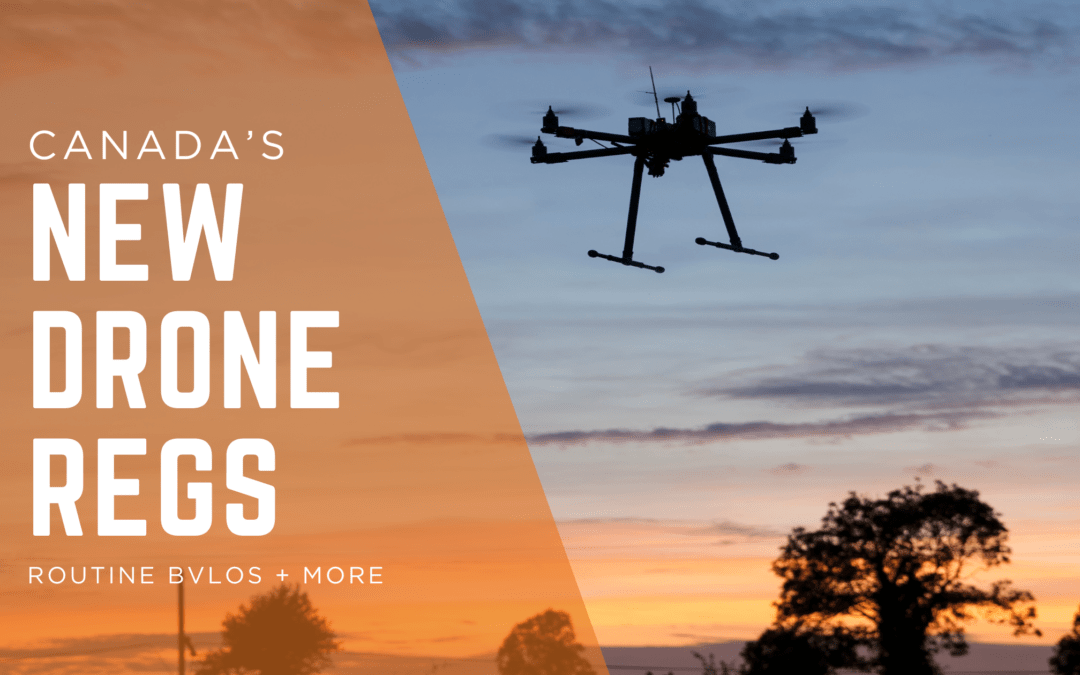
What Canada’s new drone regulations mean for you
By Kate Klassen, Training and Regulatory Specialist
It’s not every day I get excited to see an email before 0600. But yesterday, March 26, was one of those days!
Unexpectedly, Transport Canada announced the publication of the highly anticipated Canada Gazette II which included new regulations for RPAS Operations Beyond Visual Line-of-Sight and Other Operations.
It’s a hefty publication with lots of cross-references and makes for a bit of a dense read. But after a day of reading, re-reading, digesting and consulting with other colleagues who share my nerdiness about this area, I’m pleased to provide this overview – which we’ll continue to update as new information becomes available.
All-in-all, it’s what we were expecting and hoping to see: Common-sense amendments to existing regulations, noticeable inclusions from feedback on the Canada Gazette I draft, and formalization of the next phase of routine RPAS operations in Canada.
If you were one of the many who took the time to provide comments to Transport Canada following CG1, well done. What we saw today is proof they listen and that those efforts matter. Thank you, TC!
Some regulations come into effect on April 1 2025, with others commencing November 4, 2025. This phased approach enables the mechanisms for compliance to be in place prior to requiring compliance with them. In other words, it gives you time to get prepared before it’s required by law. So don’t panic. There are no major changes required before this flying season. You can’t even fly BVLOS under these rules until November.
Now, let’s dive in.
Below: Low-risk BVLOS flights will be permitted starting November 4, 2025. These operations will require a new Level 1 Complex RPAS Certificate

PRACTICALLY SPEAKING
As mentioned, the document published yesterday is complex. Our goal here is explain what it actually means in the real world. So we’re going to break this down into implications for different scenarios. Here’s what the new rules mean for RPAS pilots with:
…a sub-250 gram drone
- As of April 1 2025, flying your microdrone at an advertised event will require a Special Flight Operation Certificate
- On April 1, there are more regulations than just the CAR 900.06 ‘don’t be an idiot’ rule that come into force. These specifically spell out steps to follow if you inadvertently enter restricted airspace (CAR 900.07) and include prohibitions around emergency security perimeters (CAR 900.08)
…a Basic RPAS Certificate
- Not many changes aside from general tidying of rules to ensure intent aligns with application
- You can allow a non-certified individual to fly under your supervision (CAR 901.54)
- You are qualified as a visual observer for BVLOS operations
…an Advanced RPAS Certificate
- You get new capabilities as of November 4th – and you don’t have to do any additional testing to take advantage of them!
- You’ll be able to carry out EVLOS – Extended Visual Line Of Sight operations. This allows you to fly up to 2NM from the pilot, control station and Visual Observer at any time during the flight, provided the pilot and control station are at the take-off and launch location (CAR 901.74)
- Sheltered Operation – This allows the drone to be flown around a building or structure without the use of a visual observer, in accordance with certain conditions
- Medium Drones: You’ll be permitted to fly drones with an operating weight of up to 150kg
- With an Advanced Certificate already in hand, you meet the prerequisite to begin your Level 1 Complex ground school (more in a moment). If you’ve passed the Advanced Certificate but only hold your Basic because you haven’t yet done your Flight Review, you can pursue the Level 1 Complex
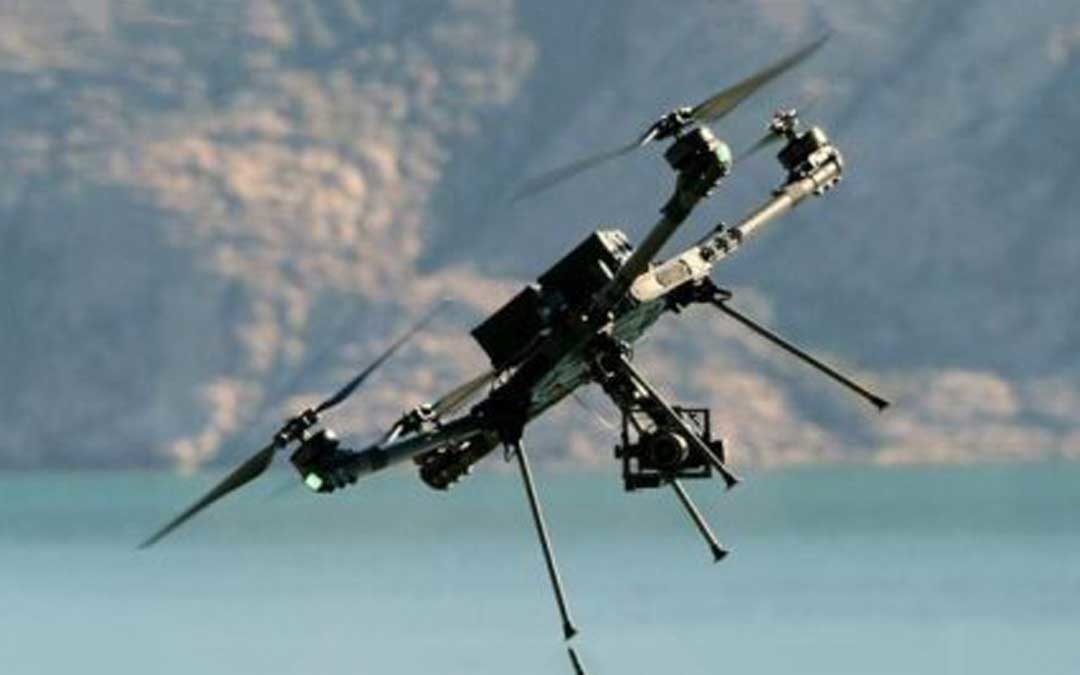
AND ROUTINE, LOW-RISK BVLOS?
This was an area the industry had really been pushing for in the new regulations. Specifically, to be able to carry out such flights without the need for a Special Flight Operations Certificate. Here, too, there’s good news:
- After November 4 2025, you’ll be able to fly low-risk BVLOS if you hold a Level 1 Complex RPAS pilot certification (CAR 901.89). This means BVLOS in uncontrolled airspace and away from people
- Permits the operation of a 250g – 150kg RPAS to conduct a BVLOS operation in uncontrolled airspace and one kilometre or more from a populated area
- Permits the operation of a 250g – 25kg RPAS to conduct a BVLOS operation in uncontrolled airspace over a sparsely populated area or at one kilometre or more from a populated area
- In addition to holding a Level 1 Complex pilot certificate, you also need to be an RPAS Operator (RPOC) or an employee/agent of one and comply with the conditions of your certificate (CAR 901.88)
INTERESTING NUGGETS:
- RPAS Operating Certificate uses the acronym RPOC rather than ROC (as was drafted previously). This is likely in response to anticipated confusion with the ROC-A or Radio Operator Certificate with Aeronautical qualification issued by ISED
- The new regs contain detailed guidance for visual observers and their requirements in various scenarios
- You can’t “daisy chain” Visual Observers for EVLOS over greater distances. The pilot/control station needs to be at the take-off and landing area and the RPA can’t go further than 2 NM from the pilot, control station AND VO.
- Despite previous suggestions, there is no medical requirement! Just fit-to-fly rules like previously
There are also some changes to SFOC requirements. Police operations at events won’t require an SFOC. Department of National Defence operations won’t require them, just adequate coordination. In addition, you’ll be able to drop lifesaving gear without an SFOC, providing you don’t create a hazard.
Declarations, maintenance and servicing will take on a more prevalent role (not surprising, given the EVLOS, low-risk BVLOS, and the ease of restrictions on flying heavier drones). It’s also worth noting that the already-useful Drone Site Selection Tool (DSST) will get upgraded to include new situational data layers for lower-risk BVLOS. These layers will include population density, aerodromes, controlled airspace, and Detect and Avoid requirements.
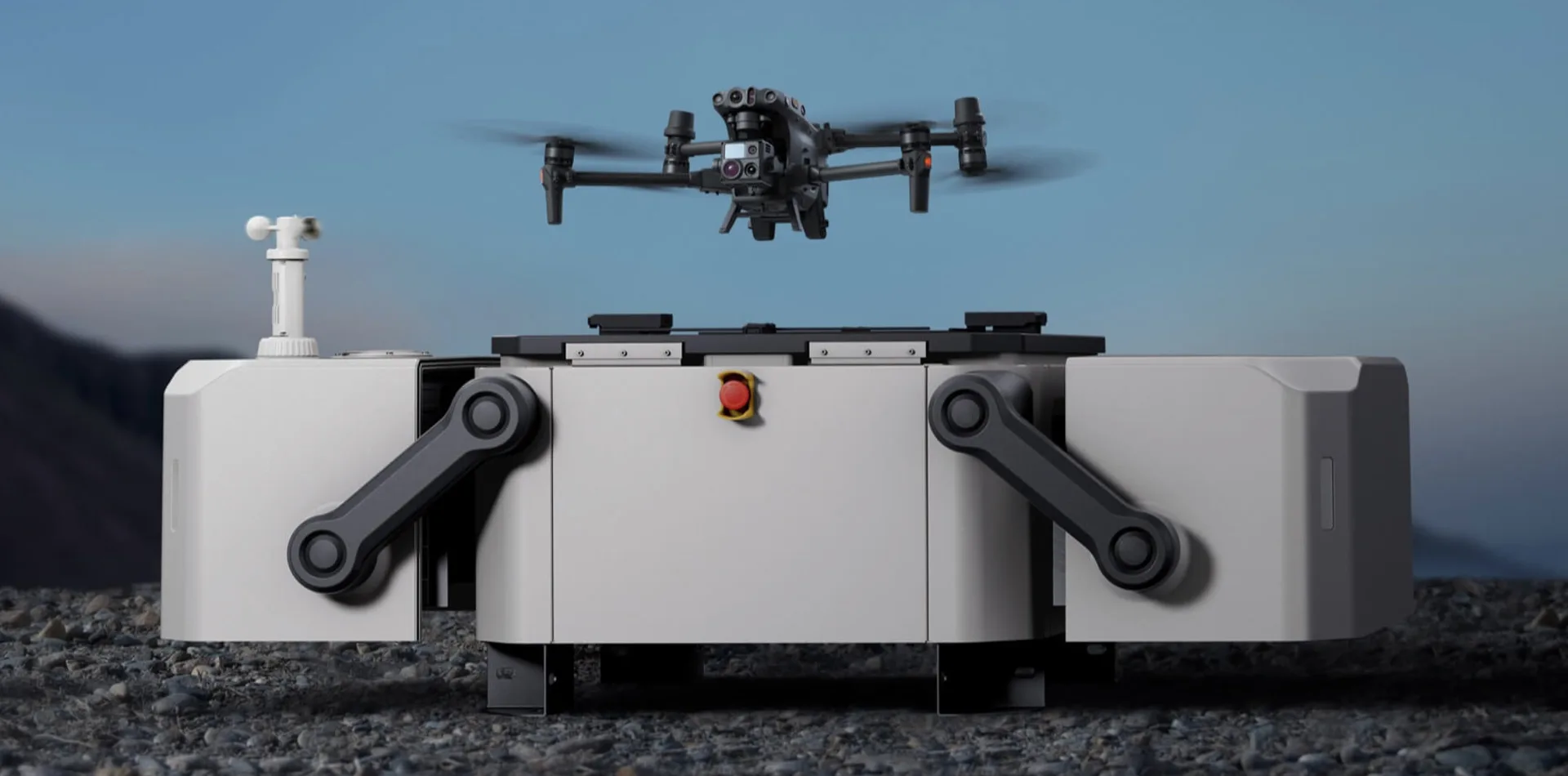
KATE’S TAKE
Canada Gazette II is a massive document. I actually tried to do a word count and the computer simply froze in fear. But, in conjunction with all of the above, here are some final key takeaways:
- Don’t freak out: There’s plenty of time to process and time to act. There are no major changes happening before November 4th, though you’ll probably want to get your ducks in a row before then if you anticipate your flying season extending beyond that date
- For maybe the first time ever, regulations have outpaced technology. We still (desperately) need technical detect solutions that are reliable, capable and affordable
- We’ve had a few folks reach out about ground school for Level 1 Complex and yes – we absolutely will be offering this. At FLYY, we have things well underway as we were anticipating this announcement.
Unlike previous ground schools, there are some instructor requirements that need to be in place before we can even make the declaration to TC that we’re offering TP15530 compliant training. We’re on top of it!
We plan to start offering live, TC-compliant courses prior to the end of April. Over a series of weeks, these courses will run every Wednesday at 0930 PDT for 2.5 hours. These sessions will be recorded and made available to all course participants to review or watch at their leisure. We’ll keep you posted as we get closer to launch.
You can take advantage of our presale here to make sure you’re first in line.
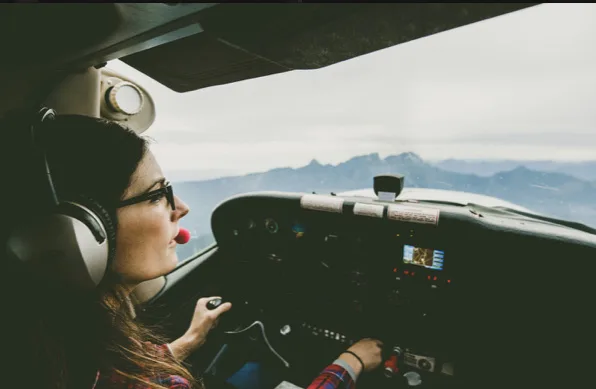
InDro’s Kate Klassen gives briefing to lawyers on drones and AAM
By Scott Simmie
Want a quick overview on drones? One with a specific emphasis on the state of Canadian regulations and where things are headed – including Advanced Aerial Mobility?
Well, the bad news is that you missed an excellent presentation by InDro’s Kate Klassen February 7th. Klassen was invited by the Canadian Bar Association, BC Branch (CBABC), to present on precisely that topic. The event was a meeting for the CBABC Air Law Section and was titled: Drones, Robotics and Advanced Air Mobility Confirmation. CBABC Members gathered in Vancouver, and broadcast the meeting live to an online audience.
The good news? We watched it. And, because Klassen works for InDro Robotics, she kindly passed along the deck used in the presentation. By simply reading this story, you’ll get the high-level low-down on the following topics:
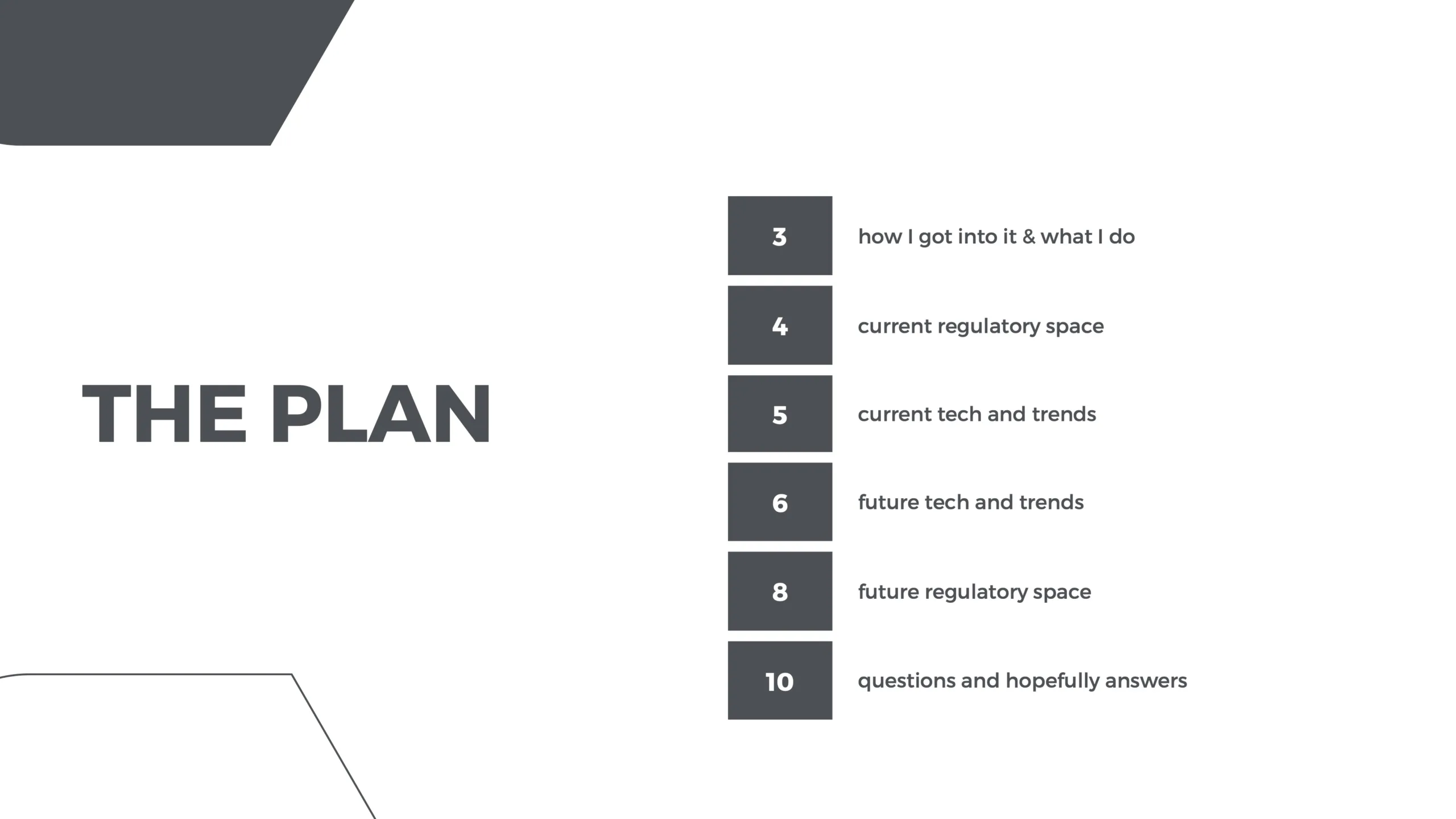
A BIG TOPIC
That’s a lot of information to go through, but Klassen is a pro. Plus, we’re not going to dive into absolutely everything she talked about – just the highlights for a busy person like you.
Kate Klassen was one of those people who could see the potential of drones quite early. That’s not surprising, given that she was already a professional in traditional aviation. She’s a Flight Instructor and commercial pilot with ratings for multi-engine aircraft, as well as flying by instruments only (IFR) and at night.
That’s a lot of experience, and her expertise is widely recognised in the aviation and drone worlds. In fact, Klassen has has been consistently active in the sector-at-large: She’s been on the Board of Directors of the Aerial Evolution Society of Canada (formerly Unmanned Systems Canada) since 2018. She’s also served as co-chair of Transport Canada’s Drone Advisory Committee, also known as CanaDAC, as well as with COPA (Canadian Owners and Pilots Association).
“I got into drones about 10 years ago, and it was a pretty traditional route into drones,” she said. “At the time, you were either a really excited hobbyist, you came from (a sector) like defense, or you were working in traditional aviation and then made the jump over to the ‘unmanned’ – that’s what we called it at the time – side.
“I like to joke that everything that I’ve flown has been unmanned,” she quipped.
She also promised “There are some really exciting things on the horizon for the drone industry.”
And when it comes to that…she’s definitely not joking.
Below: Kate, just after completing her seminar
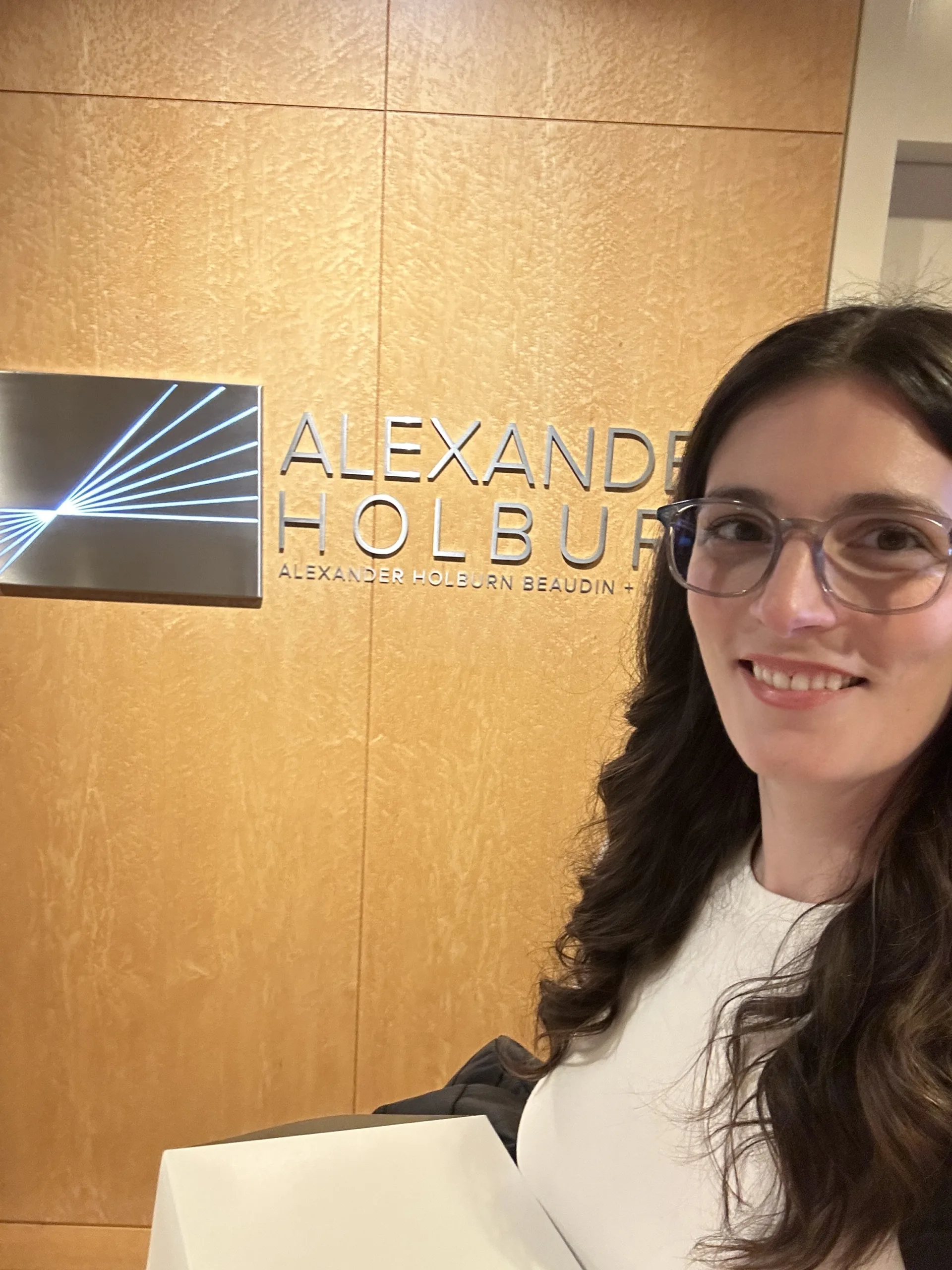
THE BASICS
Klassen quickly jumped into the current regulatory space, outlining the existing rules in Canada. She explained that regulations covering Remotely Piloted Aircraft Systems (RPAS, or drones) are covered in legislation under Part IX of the Canadian Aviation Regulations.
“It’s really regulating three things: The pilot, the product and the procedures,” she explained, adding “Drones are regulated based on risk…it’s the weight of the drone and where you intend to operate it.”
There are currently three classes of drones: Those weighing 249 grams and less (micro-drones), those from 250 grams to 25 kilograms (small drones), and 25.1 kg to 150kg (medium).
Under current regulations, a Transport Canada-issued RPAS Certificate (an operator’s license for drones) is not required if you’re flying a micro-drone. They can be flown over people and even in dense urban settings (pending local bylaws) – providing you use common sense.
“So really there’s only a few rules for micro-drones. There’s the Part VI regulations that apply to all aircraft that say ‘don’t fly in restricted areas like over forest fires’. And then in Part IX there’s only one regulation, and it’s the ‘don’t be an idiot rule’. Don’t be wreckless or cause a hazard to other airspace users or people below you. And those are really the only rules that apply.”
Operating anything 250 grams or heavier requires either a Basic or Advanced Certificate from Transport Canada. A Basic certificate allows you to fly in uncontrolled (Class G) airspace up to 400′ above ground level (with some restrictions that keep you a safe distance from people on the ground). An Advanced Certificate permits flights to the same altitude in controlled airspace – where aircraft are subject to NAV Canada’s Air Traffic Control system – albeit with fewer restrictions. For example, you can fly closer to people.
Under current regulations (subject to change in the not-so-distant future), special permission from Transport Canada is required if you want to fly your drone Beyond Visual Line of Sight (BVLOS, or farther than you can see it with the naked eye), or if you are flying a drone weighing more than 25 kilograms. If you’re flying anything heavier than a micro-drone in controlled airspace, you also need to notify and receive the green light from NAV Canada, which is a snap with the NAVDrone app.
There’s more, of course. If you’re interested in learning the rules in greater depth, we recommend you take a read of RPAS 101, created by the Aerial Evolution Association of Canada in conjunction with Transport Canada. Klassen was one of the key contributors to the document, which you can find (in both official languages) here.
Below: Kate Klassen, in her element.

TRENDS
Remember those micro-drones? They’ve become not only exceedingly popular, but also increasingly powerful. With extended flight times, high resolution cameras – and the ability to fly pretty much anywhere, including dense urban environments without additional permissions – Klassen says they’ve rapidly become an unexpectedly important part of the drone sector.
She specifically pointed to how a company called Spexi Geospatial is leveraging this technology – along with the ability for pilots to fly without a Transport Canada RPAS Certificate – with a specialized software platform. The Spexi software allows pilots to fly pre-programmed flights that capture imagery at scale. The software carries out the flight, including capturing photos at precise intervals so they can be stitched together into a hexagonal ‘Spexigon’. This ability to capture imagery at scale has already been used to create orthomosaics of entire cities in just days. Depending on the mission, pilots who complete certain missions can be paid cash or points (which act as credits for their own Spexi missions) – with potential plans for crypto tokens down the road. In fact, Spexi just announced plans for what it believes is the largest ever drone imagery capture attempted (details here).
“They’re kind of maximising this regulatory structure, the ability to operate micro-drones in environments that would be a lot more challenging if the aircraft were heavier,” explained Klassen. “Someone can take an $800 drone and turn it into a business.”
AI AND MACHINE VISION
With the growth of powerful software, including AI and Machine Vision libraries (where objects can be detected, identified and classified), Klassen said drones have been finding new use-cases. For example, a drone can be sent on a mission where it’s looking for change detection in infrastructure. Do these power line insulators look the same as they did on the last flight? Is there corrosion or cracks in critical infrastructure like bridges? Are any of those bolts sheared or damaged? Is that component too hot?
Drones with the right software and sensors can now detect such anomalies automatically. They can even forecast routes that a missing person is most likely to have taken during Search and Rescue missions based on last known location, heat signatures, path detection, etc. There’s also the business of building inspection, where a drone can automatically detect everything from poor insulation to missing shingles or other damage. There are even specialized drones equipped with sensors for Non-Destructive Testing, where a probe is physically applied to a surface during flight to detect for rust, paint thickness, weld integrity – and more.
So as AI has increasingly been applied to drones, their capabilities and utility have greatly expanded. They’ve also made the job simpler.
“So erecting scaffolding and shutting down sidewalks and preventing work from happening while the inspection’s taking place – you can cut down on a bunch of expenses that way as well,” she says.
MULTI-STAGE ROBOTICS
This is where ground robots and aerial robots work in concert. And it’s one of the coming trends identified by Klassen.
“This is where you see ground robots and aerial robots working together to achieve different tasks. You can even have a drone…moving through a warehouse scanning tags and giving you live inventory management of that warehouse, which is a job that it turns out humans really hate to do,” she said.
“So it’s a great way to increase the retention of employees they want to keep, and give those dull, dirty, dangerous jobs to a robot.”
Below: Ground robots, like the InDro Robotics Sentinel, can work in conjunction with drones as a force multiplier
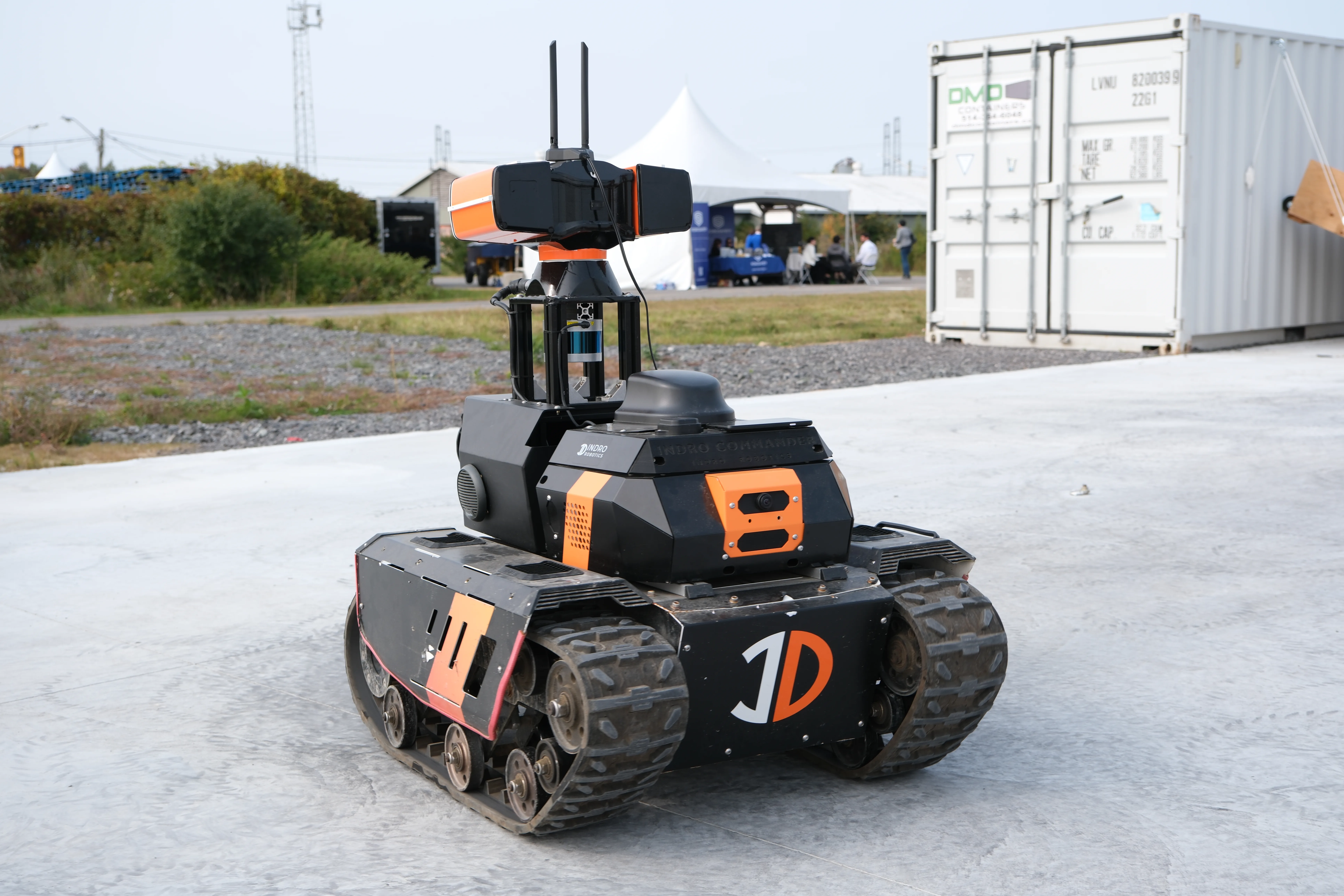
THE FUTURE
The ability to routinely fly Beyond Visual Line of Sight without the need for a Special Flight Operations Certificate from Transport Canada is something the industry has been focussed on for years. Such flights (and there are many carried out with SFOCs currently), permit drones to take on long-range tasks like delivery, inspection of railroads and pipelines – and much more. There’s great demand for such services, but the SFOC process slows things down.
Transport Canada understands this. But, as the federal regulator, it’s rightfully concerned about avoiding conflict with traditional aircraft, as well as people and property on the ground. But newer technology, including specialized Detect-and-Avoid sensors and software (along with parachutes), is paving the way for such flights to become routine.
In fact, Transport Canada is looking at revising Part IX of CARs in 2025 to permit many BVLOS flights without the need for an SFOC. There will also be provisions for drones up to 150 kilograms, meaning significant cargo could be delivered.
“I think it will be a while before you get your pizza delivered or Amazon deliveries via drone,” she says. “But routine BVLOS will be included in a regulatory package that we’re anticipating in 2025.”
AAM
Another big piece of the future of aviation – globally – is the coming world of Advanced Air Mobility, or AAM. This is where transformative and largely carbon-neutral aircraft will be capable of shuttling people or cargo between locations that have until now been poorly served (or not served at all) by traditional aviation. For example, there are remote communities that do not currently have airports because the economic model just isn’t there. AAM could change that; the goal is for such services to be accessible and affordable – and the vast majority of these aircraft won’t require runways or the other infrastructure (fuel depots, control towers) typical of small airports.
Perhaps the most well-known coming application is that of an air taxi – a Vertical Takeoff and Landing (VTOL) aircraft that can transport people (or equivalent cargo). Such aircraft (many are currently in development and testing) would transit between Vertiports, small pads that will start appearing in major cities and nearby regions in the years to come. Though the regulations have not yet been ironed out, it’s anticipated (and the US Federal Aviation Administration is planning for) such vehicles to fly within specific corridors that keep them safely separated from the routes of traditional aircraft (including helicopters). Initial flights will be carried out by a human pilot actively piloting onboard (Human In the Loop), followed by a human pilot monitoring the flight onboard (Human On the Loop). Eventually, it’s anticipated that these aircraft will be fully autonomous (Human Out of the Loop), with a person simply monitoring the flight – still with the ability to intervene should a problem arise – from the ground.
In fact, we wrote recently that BC’s Helijet has placed the first orders for some of these aircraft – a signal that we are definitely on the cusp of this future. So remember that AAM acronym; it’s coming.
“This is a huge term…and it’s going to be very much the future of aviation,” said Klassen.
Below: The ALIA 250 eVTOL (electric Vertical Takeoff and Landing) aircraft, manufactured by US-based BETA Technologies, has been ordered by Helijet International. The vehicle transitions to forward, fixed-wing flight for greater efficiency once a sufficient altitude has been reached

THE PRESENT
We should mention that AAM is not solely about these larger aircraft; drones will be part of the AAM world, with a high degree of automation coordinating flights between these various automated aircraft.
In the meantime, the drone sector continues to grow, with many successful businesses across the country – ranging from large service providers like InDro Robotics right through to smaller one- and two-person operations. There are plenty of opportunities, with proper training and even a small investment, to start a company.
And that’s where FLYY comes in. Though Klassen only mentioned it in passing, she runs a successful online training operation that takes potential pilots with zero or minimal background with drones or aviation through all of the knowledge requirements to obtain their Basic or Advanced RPAS Certificate (including arranging the Flight Review required by Transport Canada to obtain that Advanced certification). We’ve previously written about this program here.
Klassen is the instructor of the course, which is arranged in logical, bite-sized steps (interspersed with her trademark humour) to keep aspiring pilots engaged. Klassen is passionate about sharing her expertise, and it shows in these courses. If you’d like to take the next step, you can check out her many course offerings here.
There are plenty of online offerings out there. But there’s only one we’re aware of where the person behind it has trained more than 10,000 drone pilots in Canada. Though Klassen doesn’t like to promote herself, we can state with authority that she is immensely respected in the field – both by professional drone operators and by the many people who’s worked with at Transport Canada.
“Our zero to hero package is $599 and includes both ground school, prep for your Flight Review, and the Flight Review itself. A DJI Mini 3 Fly More combo is like $850,” she said.
In other words, it won’t break the bank to gain the right knowledge and get flying. Plus, Klassen is currently working on Micro-Credential courses for students to pick up skills using specialised sensors and data analysis – the kind of skills that can land a job, but are difficult to obtain without one.
Below: Kate Klassen in a screengrab from her FLYY course

INDRO’S TAKE
Kate Klassen is the Training and Regulatory Specialist at InDro Robotics. So you’d expect we’d have good things to say about her. The reality is, we’d have good things to say about her regardless of where she worked. She is a the very definition of a subject matter expert, and she loves nothing more than sharing her knowledge and helping to shape the future of aviation in Canada. (Well, that’s not quite true: She has two young children and a husband who collectively make aviation and drones her second love.)
“As expected, Kate covered a lot of ground in her presentation – and did a fantastic job of providing a clear look at the state of the industry, along with where it’s headed,” says InDro Robotics CEO Philip Reece.
“Klassen is a true professional in every sense of the word. We feel fortunate that she’s on Team InDro, where her vast regulatory knowledge of both traditional aviation and drones is immensely helpful both to our team – and the drone sector at large.”
If you’d like to download Kate’s presentation, you can do so here. And if you’re an educational institute, or a business considering training with multiple students, Klassen is always happy to discuss a break on price. You can contact her directly here.
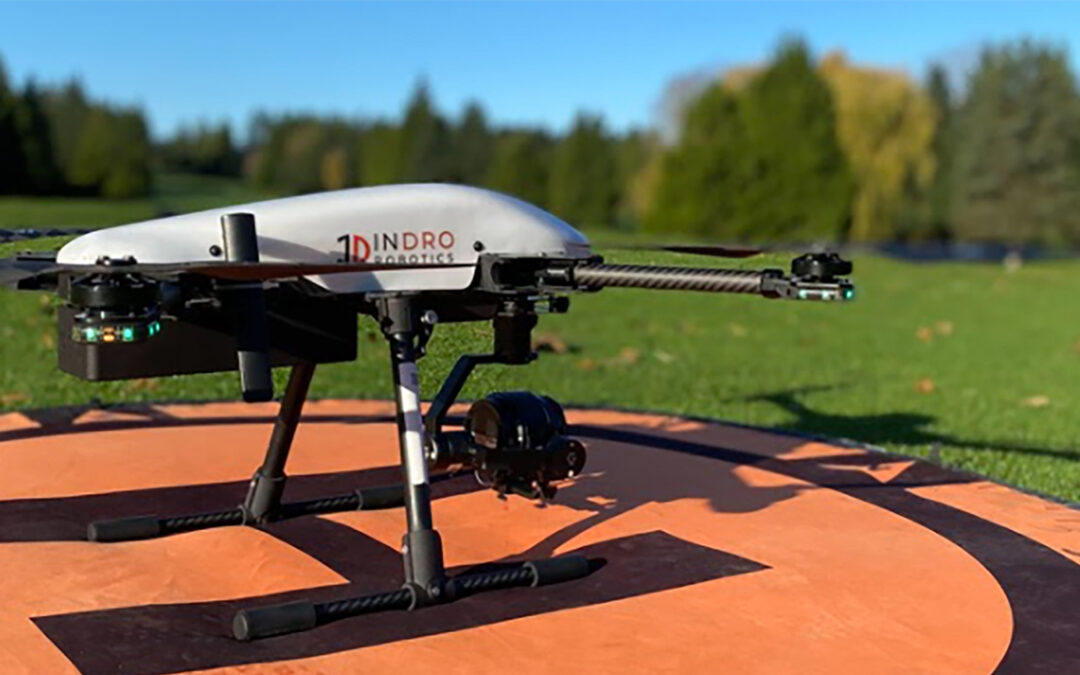
CBC HIGHLIGHTS YOW DRONE DETECTION SYSTEM
By Scott Simmie
If you follow InDro Robotics, you’ll likely be aware that we were a co-founder and core technology partner of the YOW Drone Detection Pilot Project.
The system has been operating since the fall of 2020, and detects drone intrusions not only at the Ottawa International Airport, but as far as 40 kilometres away in the National Capital Region. Data from the project helps to inform airport protocols and is shared on a regular basis with Transport Canada and law enforcement.
Back during the “Freedom Convoy” protests in downtown Ottawa, the system got onto the mainstream radar after we published this story, which outlined the high number of unauthorised drone flights taking place in downtown Ottawa. The Ottawa Citizen covered that story here and it was also a cover story for WINGS Magazine.
Now, the system is back in the news for a different reason: The recent visit of US President Joe Biden to Ottawa.
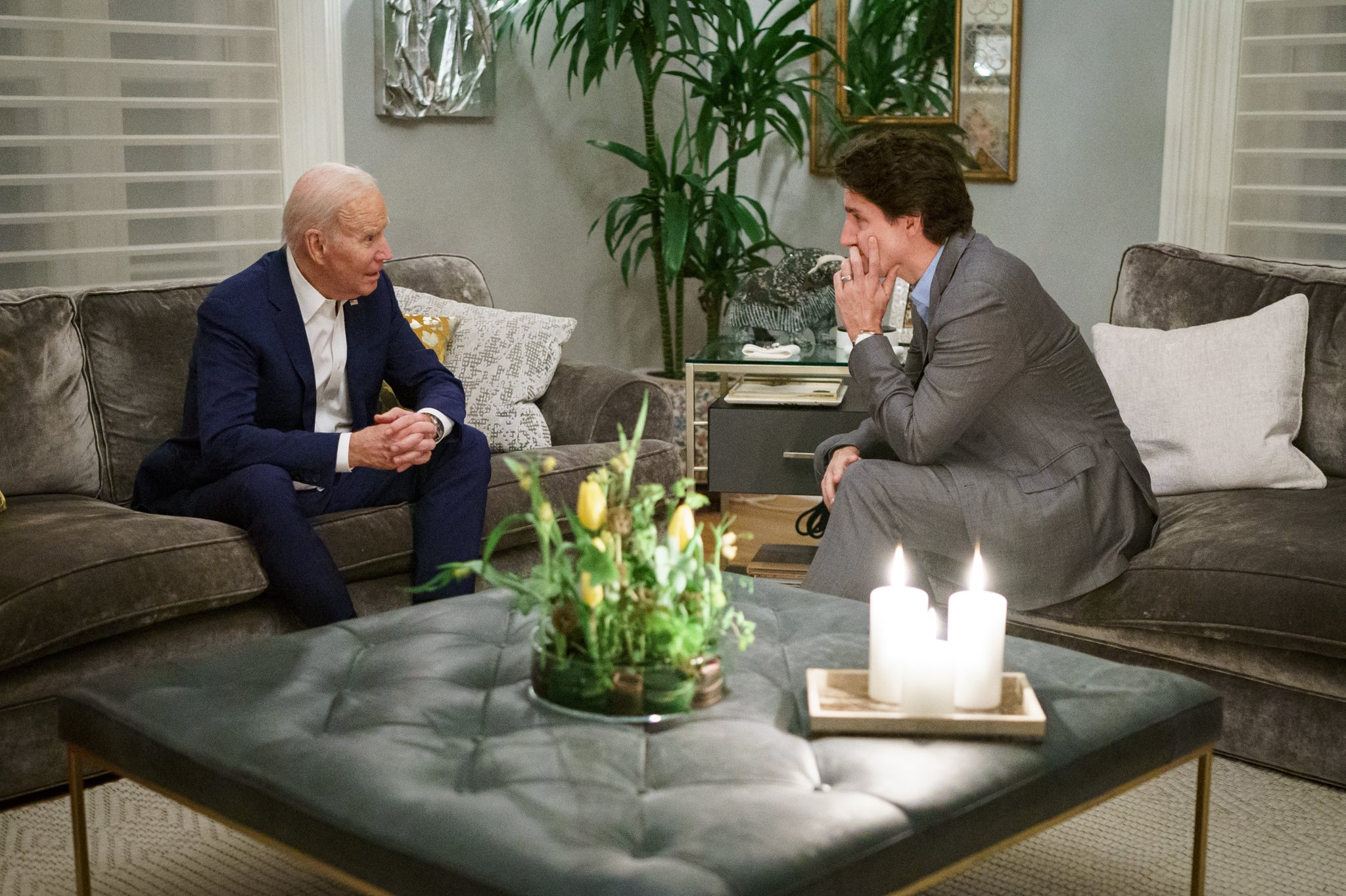
AIR FORCE ONE
Prior to the actual visit, advance teams from the Secret Service and Air Force One wanted to check out security and logistics at the Ottawa International Airport. And one of the first questions? Whether YOW had a drone detection system.
The answer, as you know, is Yes. We interviewed Michael Baudette, YOW’s VP of Security, Emergency Management and Customer Transportation. The resulting post garnered a lot of attention, including a lengthy interview by CBC Ottawa.
To view the segment on the Drone Detection Pilot project, check out the video below.
INDRO’S TAKE
The YOW Drone Detection Pilot Project has been in operation since November of 2020, and has created a wealth of data. It has helped the Ottawa International Airport develop protocols for incursions, and has led to even catching one operator flying a large drone very close to the flight path of jets. NAV Canada is a partner on this project, and Transport Canada receives regular reports.
“This system works well, but it also operates behind-the-scenes in relative obscurity,” says InDro CEO Philip Reece. “It’s great to see this coverage, which gives the general public a better understanding of the value of these systems. Michael Beaudette has been a tremendous backer of this system since the outset, so we were also pleased to see him front and centre.”
InDro is a core technology partner in the YOW Drone Detection Pilot Project. The system has proven itself, and we believe it’s an excellent model for other airports and sensitive facilities. If that interests you and you’d like to learn more, feel free to hit us up here.
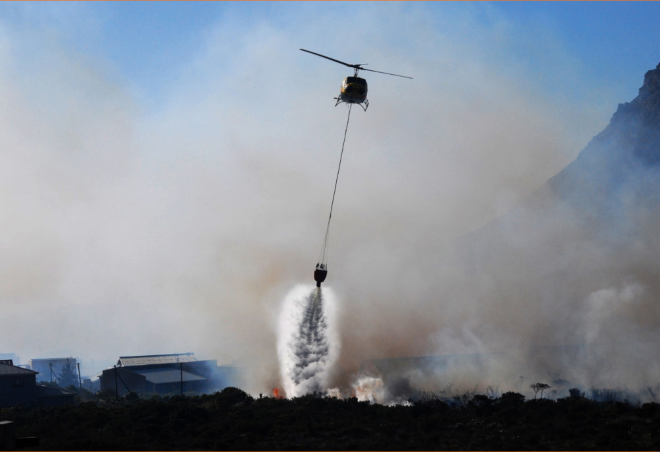
Breaking drone regulations can be expensive
Drone regulations exist for a reason. Actually, multiple reasons.
Probably the most important is to keep airspace safe and avoid any potential collisions or interference with crewed aircraft. That’s why altitude is limited to 400′ above ground level (AGL), and why flights in controlled airspace must be cleared through NAV Canada’s NAV Drone app. (If you’re a drone pilot and don’t have this app, you can get more details and links to download here.)
And, just as a reminder on that front, drones carrying out basic operations must be at least 5.6 kilometres (three nautical miles) from airports and 1.9 kilometres (one nautical mile) from heliports.
One of the other key reasons is to protect people and property on the ground. If you’re flying a drone weighing more than 250 grams and less than 25 kilograms, you’ll need to ensure that you’re separated horizontally from bystanders by at least 30 meters – though drones with an RPAS Safety Assurance declaration can fly closer in Advanced operations.
There are, of course, other rules. No flying over outdoor concerts, parades or other special events. Some of you may recall that a drone pilot paid a hefty price during the victory parade for the Toronto Raptors in 2019. The person in question flew over the event and was fined $2750 by Transport Canada. (We actually were at that parade and saw the pilot take off; he was flying a DJI Mavic Pro.)
Breaking drone rules can be expensive.
Below: A 360° shot taken during Raptors celebrations. The illegal drone flight took off about 15m from where this image was taken.
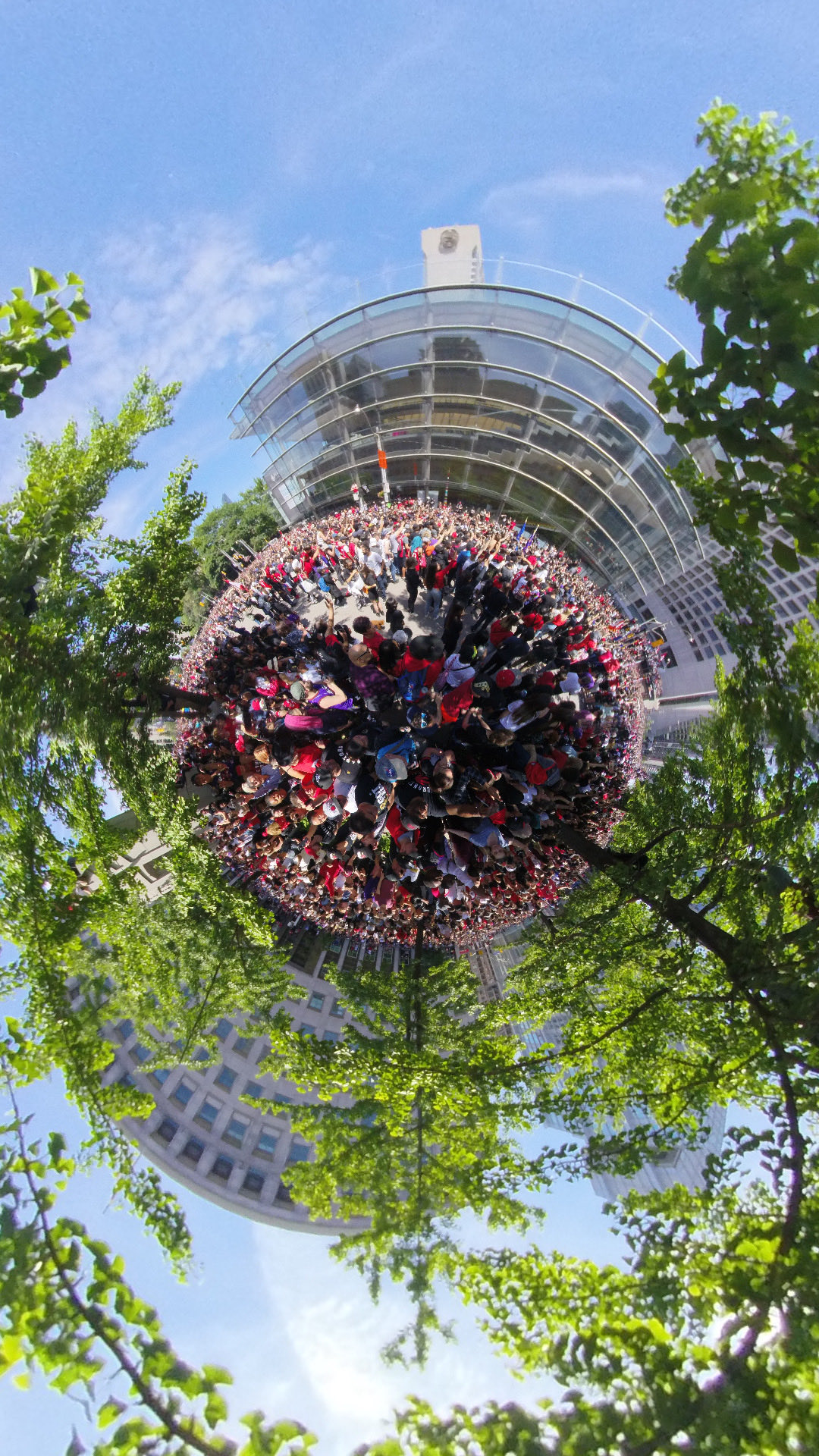
There’s a reason behind every rule
The laws that govern drones in Canada are written up in a section of the Canadian Aviation Regulations, also known as CARs. Specifically, they reside in Part IX. We recommend that everyone flying a drone in Canada – particularly drones weighing more than 250 grams – has a read through this section. It lays out the rules very clearly.
And if you break those rules? Well, there’s a price to pay. Fines for individuals include:
- up to $1,000 for flying without a drone pilot certificate
- up to $1,000 for flying unregistered or unmarked drones
- up to $1,000 for flying where you are not allowed
- up to $3,000 for putting aircraft and people at risk
So it’s worth knowing the regs, because violating them can both create risk and be very costly.
Forest fires
Wildfires in Canadian forests cause major problems every year. Significant resources are allocated to try to control and extinguish these fires – which often occur in remote locations. Aerial firefighting techniques are a big part of the equation, with water bombers and helicopters routinely deployed. (You can get a snapshot of the current wildfire situation in Canada with this interactive map. At the time this article was written, a significant Alberta fire – north of Banff and east of Lake Louise – was out of control. That fire started August 31 and has been burning for three and a half months.)
Helicopters are used to transport crews, and occasionally drop fuel retardant on small hotspots. Water bombers come in low to take on water from lakes and also drop that same water on fires from low altitudes so that targeting is accurate and there’s minimal dispersal of the fluid on the way to the ground.
And both of those scenarios? They mean these aircraft are often flying below 400′ AGL.
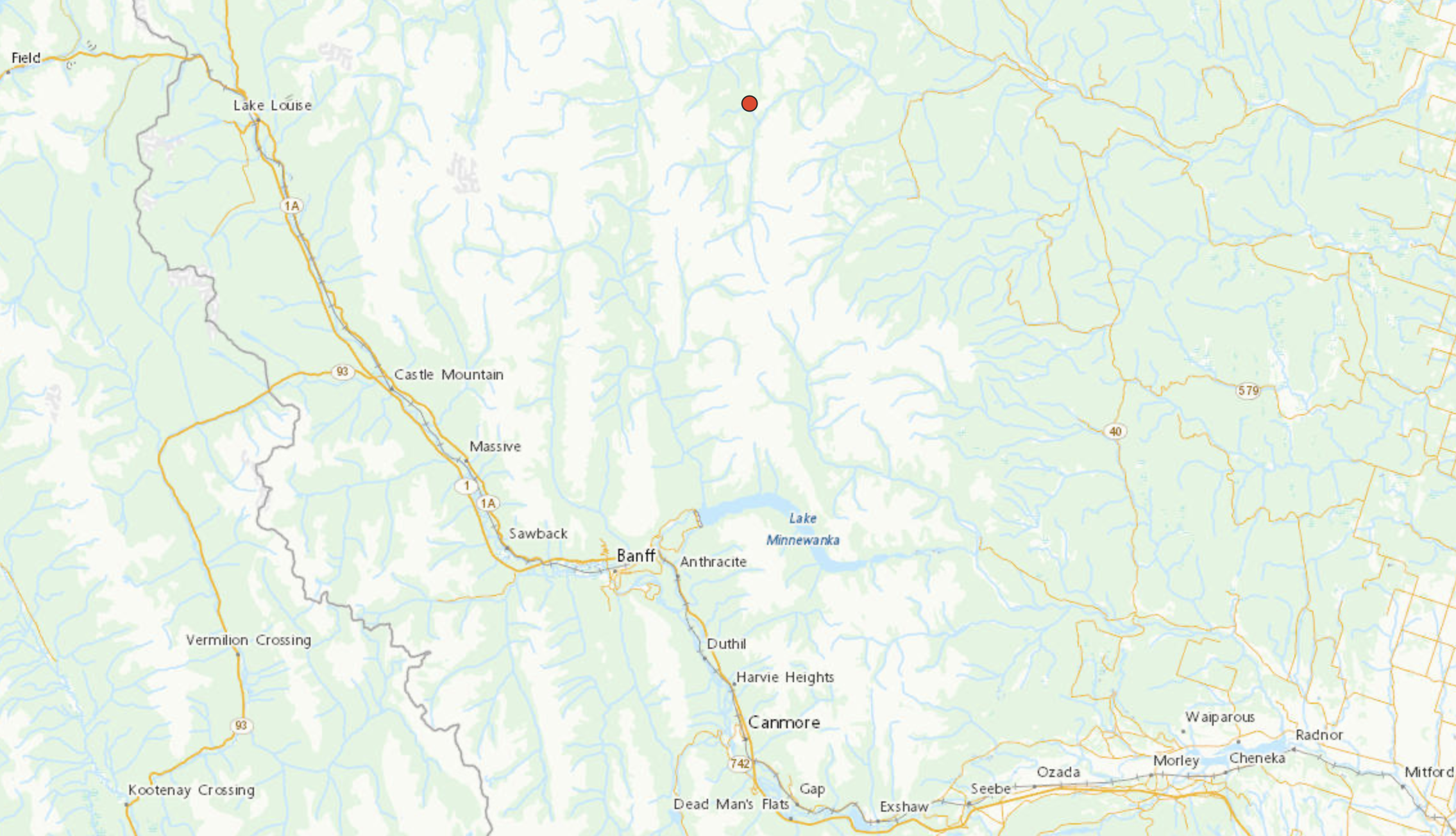
Keep your drone clear of forest fire operations
With that context, you no doubt have guessed where we’re going with this. Rules in CARs Part IX prohibit flying drones near forest fire operations. In fact, you must keep drones (and other aircraft not involved with the operations) at least five nautical miles (9.3 kilometres) away from the scene. There is also a mechanism within the Canada National Parks Act that allows for the prohibition of activities – including the banning of drone flights.
Recently, a drone pilot found out just how seriously regulators take flying drones close to a wildfire. A Canadian Press story published December 9th says that Rajwinder Singh was found guilty in an Alberta provincial court of the offence and fined $10,000.
In fact, Singh was one of four people charged for flying too close to the Chetamon wildfire in September. Four drones were also seized by authories.
InDro’s role
InDro Robotics played a role on the technology side. The company supplied drone detection equipment capable of identifying models, location and trajectory of drones in proximity of Alberta wildfires.
InDro is also involved with the Ottawa International Airport Authority’s ongoing Drone Detection Pilot Project at the Ottawa International Airport. Early in 2021, during the convoy blockade that took place in Ottawa, that project detected a very high number of illegal drone flights taking place over sensitive areas in the capital’s downtown core.
In fact, a sister company of InDro Robotics – Bravo Zulu Secure – specializes in drone detection and mitigation systems. InDro Founder and CEO Philip Reece is the Chief Technical Officer of Bravo Zulu. Here, he explains some of the company’s proprietary systems:
InDro’s Take
We’ve been in this business long enough to remember the early days. The drone space was often called The Wild West, because many people were either unaware of regulations or chose to willfully ignore them. This was particularly true of rogue pilots, usually recreational operators, who would carry out reckless flights. Those flights often (and rightfully) received negative press coverage and caused regulators to take an even more cautious, incremental approach with opening up the skies. Understandable.
Since then, the drone community has done a great job of educating and even policing itself. Flights like the four that took place near that Alberta wildfire are now, fortunately, very rare.
But, as we’ve seen here, they still happen. Not only is it wise for drone operators to become fully familiar with Part IX of CARs, but also to be aware that hefty fines can and will be imposed on those who violate the law. It’s also worth remembering, regardless of location, that the technology exists to detect these flights, along with the location of the operator.
Thankfully, the vast majority of drone pilots know the regulations – and abide by them.

Spexi announces “Spexigon” – a global fly-to-earn platform
Vancouver-based Spexi Geospatial has some news – and it’s big.
The company has announced a plan, and a platform, to capture high-resolution aerial data of the earth with drones. Drone pilots will be able to fly to earn crypto currency – or even dollars.
The long-term goal? Well, picture crystal-clear data sets of cities, infrastructure, and even rural settings. With each individual pilot capturing data from different locations, Spexigon will assemble it over time to form a global jigsaw puzzle – and sell parts of that dataset to clients.
We’ll get into more details shortly, but Spexi’s plan has some strong backers – including InDro Robotics.
News release
News of Spexigon came in the form of an announcement. The company revealed it had secured $5.5 million USD in seed funding “to pursue our vision of collecting Earth’s most important data with drones.” The funding round was led by Blockchange Ventures, with other investing by InDro Robotics, Protocol Labs, Alliance DAO, FJ Labs, Dapper Labs, Vinny Lingham, Adam Jackson, and CyLon Ventures.
The same team that built Spexi – an easy-to use system for automated flight and data acquisition – is developing Spexigon. This brief video gives a “big picture” look at how it will work when it’s rolled out next year.
“Fly to earn”
A big part of what makes Spexigon’s plan so intriguing is what you might call incentivised crowd-sourcing. Anyone with a drone can download the forthcoming Spexigon app and fly an automated flight. The images will be uploaded to Spexigon to build the database – and the pilot will be rewarded.
“With our new Fly-to-Earn model, people who own consumer drones will be able to earn $SPEXI tokens and dollars while building a high resolution base layer of the earth,” reads the Spexigon announcement. “It is our hope that soon any organization or individual will be able to use the imagery collected by the Spexigon platform to make better decisions.”
Business model
You could think of this over time as like Google Earth, only with really sharp aerial imagery. Every time a pilot carries out a flight for Spexigon, that map will continue to fill in, building Spexigon’s database. Clients will purchase imagery online.
“This new base layer will enable governments and organizations of all sizes to make better decisions about real world assets like buildings, utilities, infrastructure, risk and natural resources, without requiring people on the ground,” continues the announcement.
“By using Spexigon, organizations that require high-resolution aerial imagery will no longer need to own their own drones or hire their own pilots. Instead, they’ll use our web and mobile app to search for and purchase imagery. Data buyers will then be able to use a variety of internal and external tools to put the imagery to use.”
For pilots
Spexigon says it will have online training when it launches. Pilots will learn how to use the app to carry out their flights – which, obviously, the pilots will monitor. Depending on the location, pilots can earn crypto currency or actual dollars. Some locations, obviously, will have greater value to Spexigon and its clients than others.
“The app will contain a map of the earth overlaid with hexagonal zones called ‘Spexigons’. Spexigons that are open and ready to fly will be easily visible so pilots can choose an area close to them and begin collecting imagery,” says the company.
“To ensure that imagery is captured in a safe, standardized, and repeatable way, our app controls each pilot’s drone automatically while they supervise the flight. Although our app will do the flying, pilots will always be in command and will have the ability to take back manual control at any time if need arises.”
Spexigon is now starting to build the app, and already has a small community emerging. You can join its Telegram channel here – and there’s also a Discord channel.
As for those ‘Spexigons’, the image below gives you an idea what those pieces of the puzzle might look like.

InDro’s take
Since InDro Robotics is one of the backers of Spexigon, we obviously feel the plan is a good one.
It comes from the outstanding team that built Spexi from scratch into a user-friendly, automated system for capturing and crunching aerial data. We also believe drone pilots will embrace this unique “fly to earn” model – a global first.
“The Spexi team has already created an excellent and proven Software as a Solution product and clearly has the expertise in this space,” says InDro Robotics CEO Philip Reece. “I’m genuinely excited about the potential for Spexigon to become the ‘go-to’ database of high-quality aerial imagery from around the world.”
So are the rest of us.
